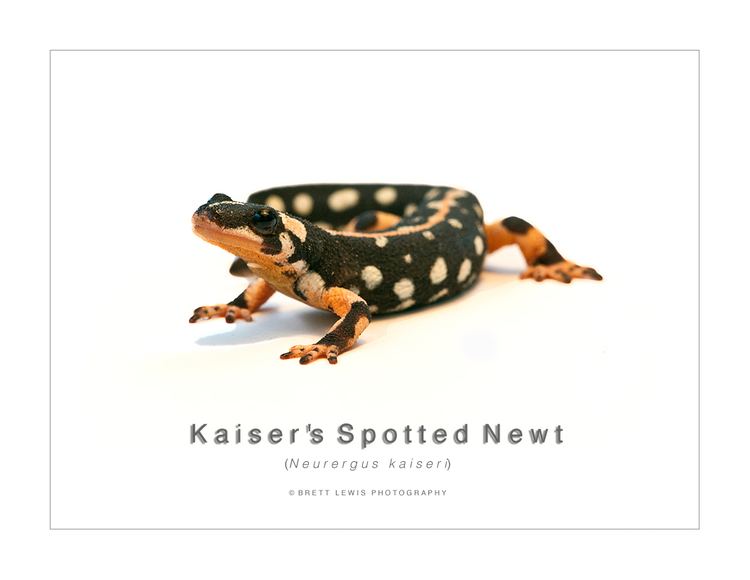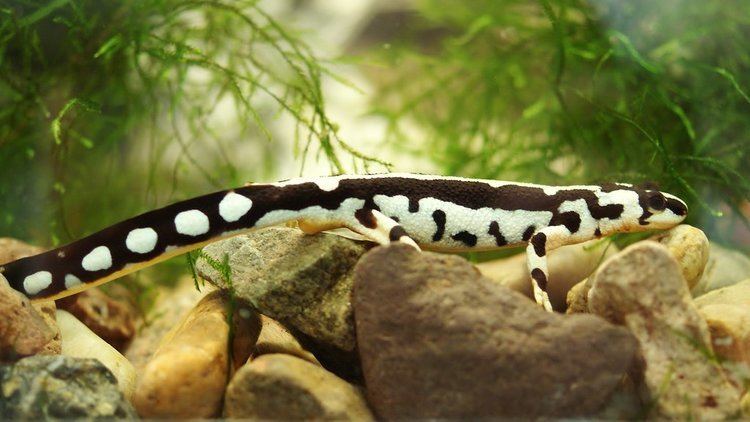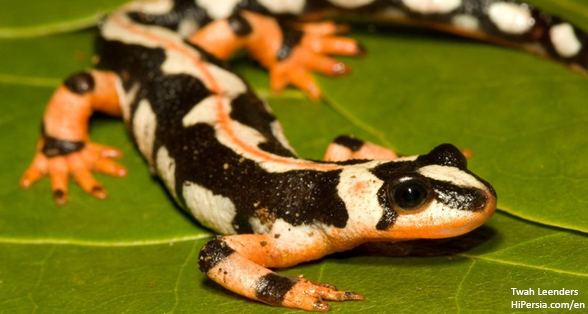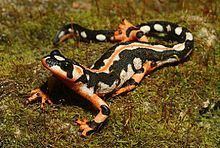Kingdom Animalia Order Caudata Genus Neurergus Higher classification Neurergus | Phylum Chordata Family Salamandridae Scientific name Neurergus kaiseri Rank Species | |
 | ||
Similar Neurergus, Salamander, Amphibians, Yellow‑spotted newt, Kurdistan spotted newt | ||
Kaiser's spotted newt (Neurergus kaiseri), also known as the Luristan newt or emperor spotted Newt (not to be confused with Tylototriton shanjing), is a species of very colourful salamander in the Salamandridae family. It is endemic to the southern Zagros Mountains in Iran where it is known from just four streams. Populations of this newt have been declining and the International Union for Conservation of Nature has rated it as "vulnerable". A captive breeding programme has been established in several zoos.
Contents

Distribution and habitat

Kaiser's spotted newt is endemic to the southern Zagros Mountains in Iran. It is primarily found in highland streams surrounded by arid scrubland, but can also be found in ponds and pools. It is known only from four streams in a single catchment area and has a total area of occupation of under 10 km2 (3.9 sq mi). Water is absent from its habitat for a significant part of the year and it moves out into the surrounding woodland which is predominantly oak and pistachio, during which time this species is known to estivate.
Conservation

It is considered critically endangered due to its tiny range (it inhabits an area of less than 10 km2), continuing habitat loss, and the illegal capture of salamanders for the wild animal trade. In 2008, the wild population was estimated at less than 1000 individuals. However, a new survey in 2014 estimates a population of over 9,000 adults, and range estimate that could provide habitat for more than 40,000 Neurergus kaiseri.
The Luristan newt is a candidate for CITES listing. It also has a captive breeding program involving several European and North American zoos, such as Sedgwick County Zoo. Iran is planning on starting its own breeding program.
Captive care

These animals, despite being critically endangered, are often sold as captive bred (CB) animals. They are hardy animals under the right conditions. Three adults can easily live in a twenty-gallon terrarium, and should be offered both large amounts of land and water, as these species rarely visit water until the breeding season, as they live in a dry area. If keeping them terrestrial, they should be offered a good, but fairly dry top-soil, or coconut fiber, many live plants, and many hiding places. The best temperature ranges are 60–68 °F (16–20 °C), but can withstand temperatures up to 86 °F (30 °C). If being kept aquatic or semi-aquatic, they need cycled water, and live plants such as Elodea, Java fern, and other aquatic plants.
Feeding is simple, as these newts are very hardy animals in captivity, and love to eat. Good feeders include Earthworms/Canadian night-crawlers, live and thawed Blackworms, live and thawed Blood-worms, calcium dusted Pinhead crickets, the occasional Waxworm, and various other insects. Insects collected outside should be avoided as they might introduce pesticides or parasites.
Like many amphibians, this species is prohibited to move through US state lines. As of 2016, eggs may legally be shipped.
